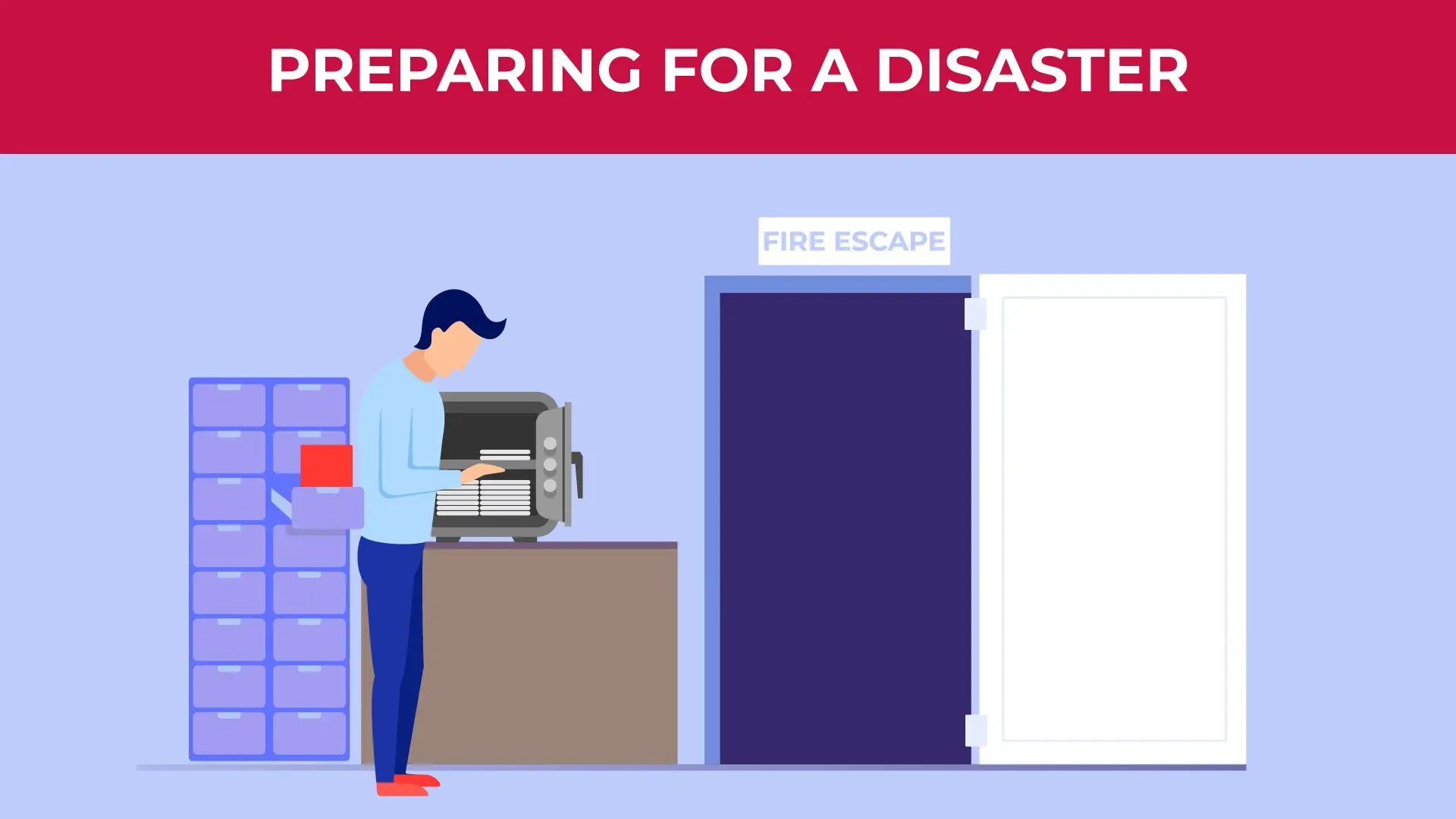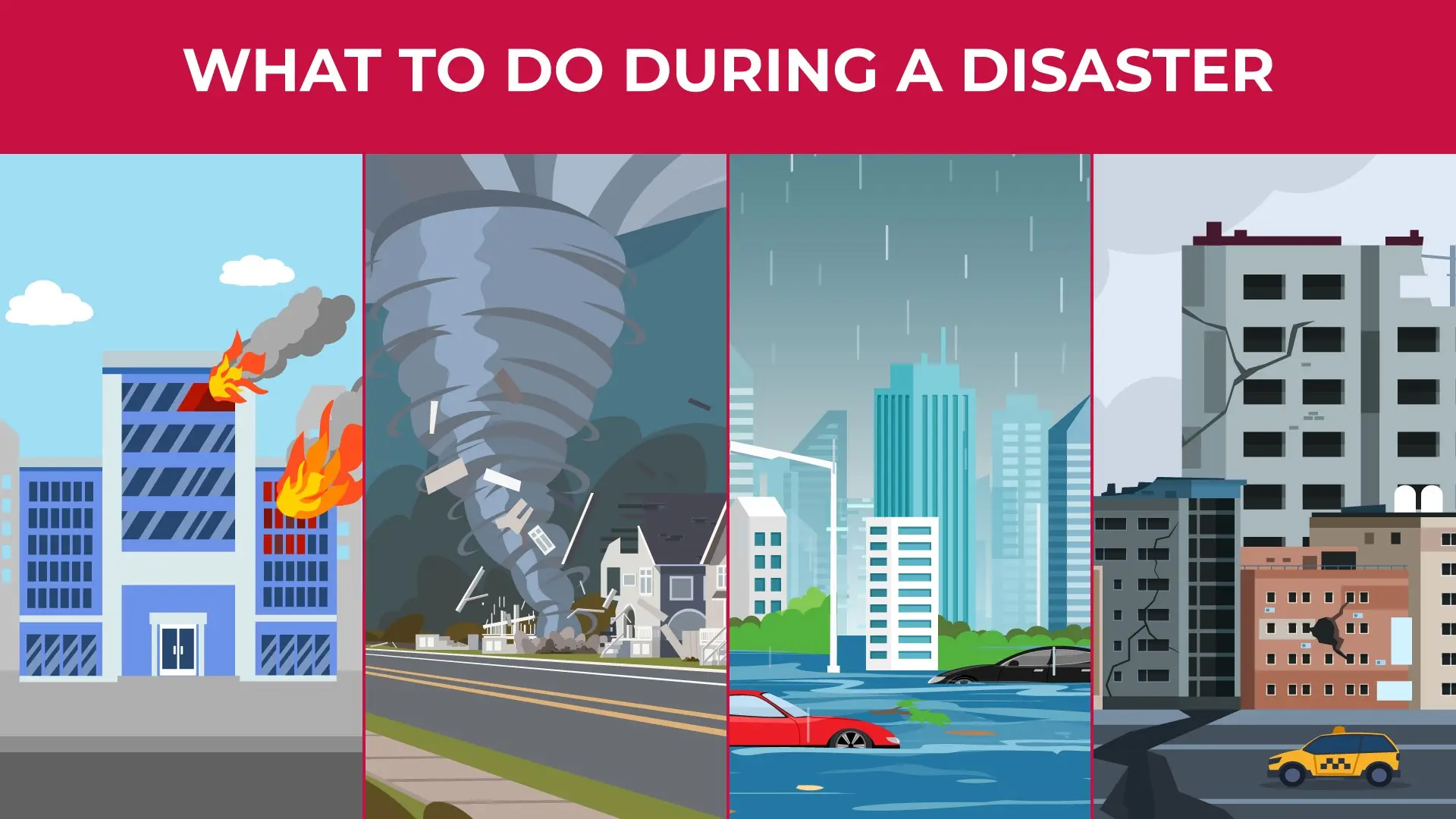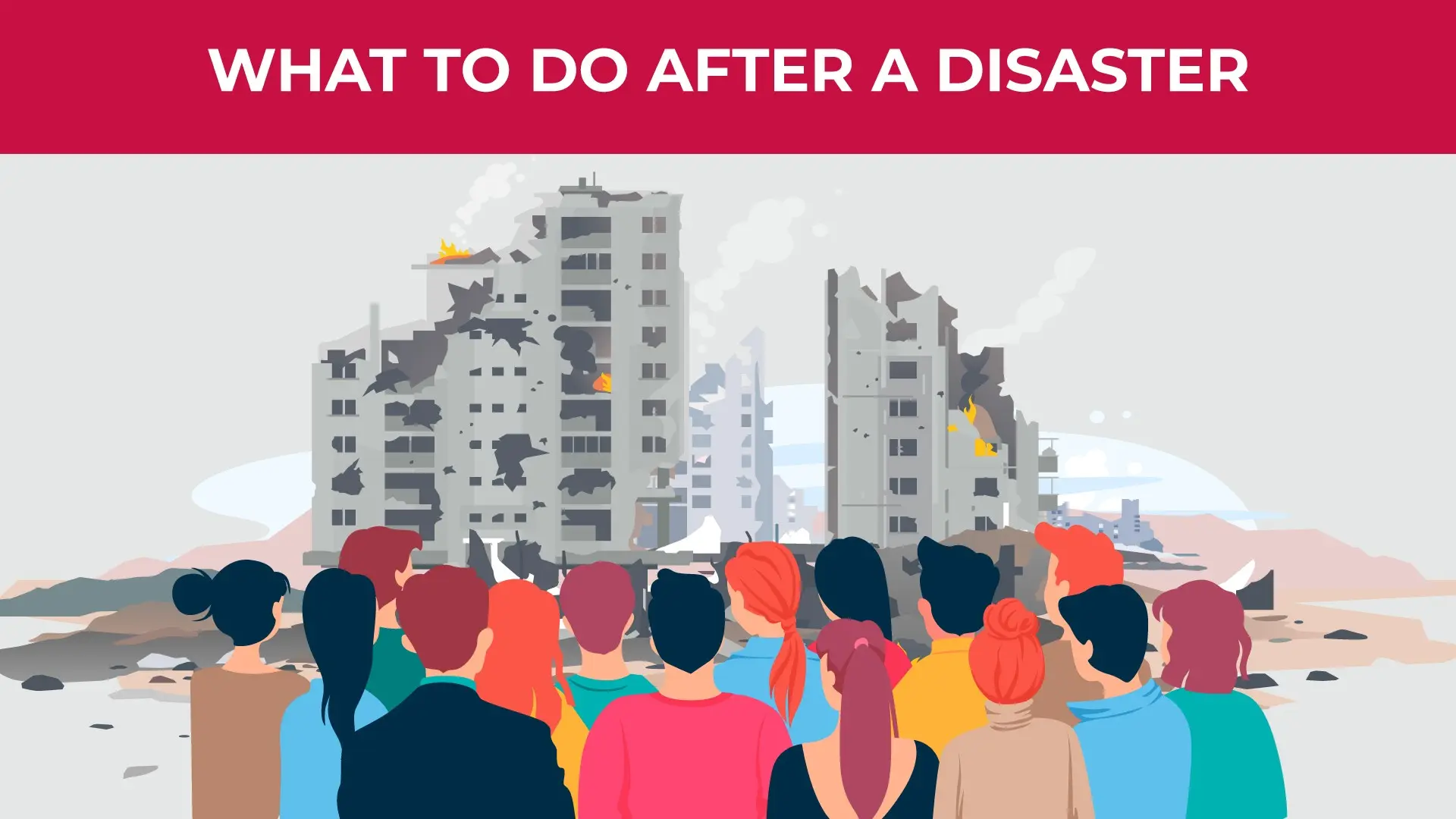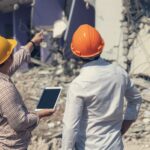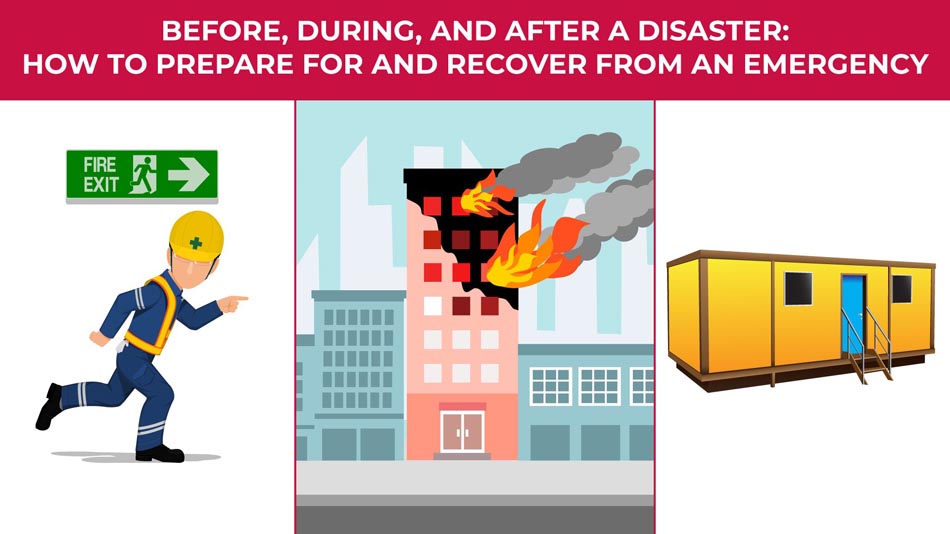
Running a business is an exercise in unpredictability. An emergency can arise from external factors that you have limited control over and others that you have no control over. No matter their nature, disasters can threaten even the most well-run businesses. In fact, according to FEMA, between 40% and 60% of small businesses never reopen after a disaster.
So how can you prepare for the worst without overspending on time and resources? How can you get through a disaster when it’s happening? And what can you do to recover from a disaster? At Satellite Shelters, we’ve helped many businesses through disasters by providing fast, reliable modular buildings. Here’s what we know about getting to the other side of an emergency and into a position to succeed.
Preparing for an Emergency
It’s said that preparation is half the battle, and that rings true for weathering a disaster as well. Since you can’t control most disasters, what you can control becomes that much more important—and what you can control is your preparedness.
Know Your Disasters
While there are things you can do to prepare for disasters in general, it’s also important to prepare for specific disasters when possible. A fire, a tornado, and an earthquake require different solutions and approaches.
Each area of the country has its own unique geography and therefore its own set of disasters. For more information about what kind of disasters are possible or likely in your region, visit the Red Cross website for information on common natural disasters.
Create an Emergency Response Plan
One of the most important things you can do to prepare for disasters is to create an emergency response plan. These plans help reduce the negative impact of disasters and can also include additional information that helps guide your organization during other stressful events.
The best kind of emergency response plan should be easily accessible to all employees in both digital and physical form and includes:
- Who to contact for specific scenarios and their contact information
- Contact information for local authorities
- How to take action in specific emergencies (i.e., a plan for fire, flood, tornado, etc.)
- Training guidelines and exercises
Also, offering supplemental training classes—such as for first aid and CPR—could help save individual lives during a disaster and provide peace of mind.
Protect Business Records
In addition to protecting your employees during a disaster, it is also crucial to protect your business records and other important documents. Whether it’s money, Human Resources documents, business plans, or something else, you’ll want to protect them from destruction. In some cases, these documents and items can be difficult or impossible to duplicate or recreate.
If physical records and other important documents cannot be digitized, you’ll want to consider keeping them in a safe. But not just any safe will do; you want one that’s more than simply difficult to steal or break into. Important qualities in a safe include:
- Fire resistance—the greater the fire resistance, the better protected the contents will be
- Torch resistance—resistance to opening via blowtorch
- Tool resistance—resistance to prying, drilling, chiseling, etc. from burglary tools
- Water resistance—resistance to water damage and submersion
Safes come in different sizes and types, and you may not need the largest and best safe out there. However, disasters can be unpredictable, and hedging against multiple bad things at once (such as a broken water line during a fire) can help keep important documents safe.
Your data and digital records are also important. Be sure to back up your information separate from your local network. Utilize a cloud service such as Dropbox, Microsoft OneDrive, or Google Drive so your digital records are accessible after a disaster. Best of all, these cloud backups can save you during a less dramatic disaster, such as a fried hard drive or broken server.
What to Do During an Emergency*
For many emergencies, the actual event itself takes place in a short period of time—which is part of why preparation is so important. But what to do during specific emergency situations depends on the emergency. Let’s highlight a few of the most common emergencies and what you should do during each of them.
What to Do During a Fire
No matter where you are in the United States, a fire can happen in your place of business. Whether it’s the result of human error, equipment malfunction, or natural disaster, fires pose a real threat to every business. During a fire, it’s most important to get outside the building safely.
Here are some additional tips:
- Inform others of the fire as quickly as possible.
- Get out and stay out, avoiding smoke if possible.
- Don’t open doors that are warm to the touch.
- If you must go through smoke, get as low as possible.
What to Do During a Tornado
More tornadoes take place in the United States alone than they do throughout the rest of the world combined, and the U.S. regularly has the fiercest tornadoes, too. Nearly every state in the country can experience a tornado, but they are most common throughout the Great Plains states, such as Oklahoma and Kansas, as well as parts of Texas and Louisiana. During a tornado, it’s most important to find the best nearby shelter from wind and debris.
Here are some additional tips:
- Take shelter in the safest space possible.
- Don’t use elevators.
- As much as possible, stay away from windows.
- Take cover under large objects like desks or tables.
What to Do During a Flood
Floods are somewhat different than the rest of these disasters, as the true extent of a major flood takes place throughout a longer period of time. Your business’s susceptibility to floods depends heavily on both rainfall and its specific location. The risk of flooding will be greater near bodies of water, but flash flooding in low-lying areas is also possible even if a water source isn’t nearby. During a flood, it’s important to evacuate safely or seek high ground and avoid quickly flowing floodwaters if evacuation is not possible.
Here are some additional tips:
- If told to evacuate by the authorities, do not hesitate.
- Don’t walk, swim, or drive through floodwaters.
- Go to the highest level of a building if trapped.
- Get on the roof only if absolutely necessary.
What to Do During an Earthquake
Earthquakes range widely in strength and damage potential. It’s important to protect yourself from loose furniture and wall decorations during any time an earthquake happens.
Here are some additional tips:
- Do NOT go outside.
- Drop, cover, and hold on.
- Wait for aftershocks.
- Be aware of broken power lines, gas lines, etc.
What Your Organization Should Do After a Disaster
Following a disaster, it should be the job of your organization to take two main steps. First, you’ll want to take care of any employees and clients you have; the people affected by your organization need to know what’s going on. Second, you’ll want to get your business back up and running as quickly as possible; the faster you do this, the better chance you’ll be able to survive and even thrive afterward.
Communicate Honestly and Keep the Dialogue Open
In the event of a disaster, your employees will be looking to the leadership team for guidance. Your best tool for guidance is simple: honest, open communication. By keeping a dialogue open regarding the disaster, you’ll be able to develop trust, as well as learn what’s important to your employees.
Quick, timely communication is just as vital as accuracy, too. The longer you go without communicating, the more stressful a situation it is for everyone. This also applies to any clients you have who may be unaware of the disaster. Be open and honest with them as well. You can’t control that a disaster happened or if your client will stick with you afterward, but you can control your relationship with them in that moment.
Assess Damage Quickly
Working with insurance can take a while, and the process can easily be made more complicated than it needs to be if you don’t have your proverbial ducks in a row first. Additionally, getting an accurate picture of how much damage you’ve suffered can help you make other decisions down the road.
When you’re examining damage, ask yourself questions like:
- What is physically damaged?
- What is still intact?
- How quickly can the damage be repaired or fixed?
Modular Buildings Can Help You Get Back on Your Feet
If you’ve suffered property damage due to the disaster, getting back on your feet may seem difficult. Modular construction can help greatly in disaster recovery. Modular or portable buildings can be cost-effective ways of getting back to normal (or as close to it as feasible) with minimal downtime.
Whether you need a few portable offices, a temporary lunchroom, or even an entire school complex, modular construction is an important tool in your disaster recovery plan. Modular and portable buildings can be delivered and set up quickly, allowing you and your employees to get back to work.
When Disaster Strikes, Satellite Is Here to Help
A natural disaster is something over which you have little control, but what you can control is how you prepare for and recover from an emergency.
Satellite Shelters has been a part of disaster plans across the United States. We’ve helped schools, churches, and all kinds of businesses get back on their feet quickly with our modular construction and portable building options. Looking to get back to normal following a disaster or to start your disaster plan? Contact your local Satellite Shelters branch today.
*Tips provided are for informational purposes only.
